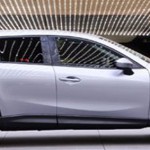
Making sure that you get a test drive before you buy a car can be crucial to its suitability; while there may be some cases where a test drive isn’t necessary, which might include buying a car that you’re already familiar with from a friend or family member, in most cases it’s essential. A test drive can enable you to familiarise yourself with the size and weight of a vehicle, while also enabling you to identify any flaws with a car that might become worse over time.
In general, a test drive can allow you to see whether a car’s performance matches up to its description on paper; this is particularly important when you’re buying a used car, as you can find problems emerging that weren’t mentioned by a seller. Particularly focus on features like brake pads, lights, and steering wheel responsiveness, as well as the general movement of a car. Does its power steering work properly? Can you corner cleanly, and how difficult is a car to park?
Moreover, taking a test drive can enable you to notice any small issues that only start to appear when you’ve been on the road for a while. Bringing a friend along with you for a test drive can make it easier to spot these problems, which might include issues with a radio, windows, engine noises, and black smoke coming out of a car’s exhaust. Make sure that you check for these kinds of faults before you commit to a car.
When taking a test drive with a private seller, try to have someone come with you to offer a second opinion; during a drive, if the seller is present in the car, use the opportunity to put them on the spot regarding any problems that you notice. You can also reduce the risk of finding out that a car has problems during a test drive by going to an approved used dealership. For example, if visiting Cooper MINI dealers, you can use a test drive as a chance to discuss the performance of individual features with a salesman.
The same caution over test drives also applies to buying new cars. Although there is less risk of experiencing faults with a new car than with a used one, it’s still important to test out the weight and responsiveness of a vehicle, and whether it’s right for you. Similarly, you can check to see whether there’s enough space in the back of a car for children as passengers, and how comfortable you are with seating positions and options like four wheel drive.
In this context, it’s arguably always necessary to take a test drive before you buy a car; even if you’ve driven the same model before, it’s still important to see whether there are any slight differences that could turn you against making an investment. When combined with a thorough inspection of paperwork and financing options for a car, a test drive should consequently be a priority.